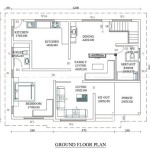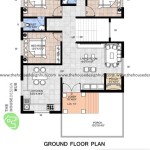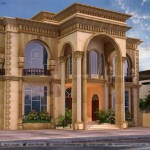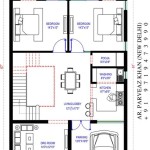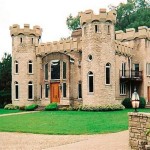Mediterranean House Plans With Interior Photos: A Comprehensive Guide
Mediterranean house plans evoke a sense of timeless elegance, warmth, and connection to nature. Inspired by the architectural styles prevalent in countries bordering the Mediterranean Sea, these homes are characterized by their stucco exteriors, red tile roofs, arched doorways, and courtyards. The interiors often feature open layouts, natural materials, and a focus on indoor-outdoor living. This article provides an in-depth exploration of Mediterranean house plans, complete with interior photos to illustrate key design elements.
The allure of Mediterranean architecture lies in its ability to create a comfortable and inviting living space. The design principles prioritize functionality, natural light, and ventilation, making these homes well-suited for warm climates. However, with thoughtful adaptation, Mediterranean design can be successfully implemented in a variety of geographical locations.
Key Characteristics of Mediterranean House Plans
Mediterranean house plans are defined by several distinct architectural characteristics that contribute to their unique aesthetic appeal. Understanding these features is crucial for appreciating the design style and for making informed decisions when choosing or customizing a Mediterranean home plan.
Exterior Design: The most recognizable feature of a Mediterranean home is its exterior. Stucco walls, typically in shades of white, cream, or beige, provide a textured surface that reflects sunlight and helps to keep the interior cool. Red tile roofs are another defining element, adding a touch of rustic charm and visual interest. Archways, whether used for doorways, windows, or decorative elements, are prevalent throughout the design. Wrought iron details, such as balconies, window grilles, and gates, often adorn the exterior, adding a touch of sophistication. Courtyards are frequently incorporated into the design, providing private outdoor spaces for relaxation and entertainment.
Interior Layout: Mediterranean house plans typically feature open and flowing layouts that promote a sense of spaciousness and connectivity. Large living areas seamlessly transition into dining rooms and kitchens, creating a unified living space. High ceilings, often with exposed beams, enhance the feeling of airiness and grandeur. Natural light is maximized through the use of large windows and strategically placed skylights. Interior courtyards or patios can be accessed directly from the living areas, blurring the boundaries between indoors and outdoors. These layouts encourage social interaction and provide ample space for family gatherings and entertaining.
Materials and Finishes: The choice of materials and finishes plays a significant role in defining the character of a Mediterranean home. Natural materials, such as stone, wood, and terracotta, are used extensively throughout the interior. Stone floors, walls, or fireplaces add a touch of rustic elegance, while wood beams and trim provide warmth and visual interest. Terracotta tiles are frequently used for flooring, backsplashes, and decorative accents. Wrought iron is incorporated into lighting fixtures, furniture, and decorative elements. The color palette typically consists of warm, earthy tones, such as beige, brown, terracotta, and olive green. These colors evoke a sense of natural beauty and create a relaxing and inviting atmosphere.
Interior Design Elements in Mediterranean Homes: A Closer Look
The interior design of a Mediterranean home complements the architectural style, creating a cohesive and harmonious living space. Several key design elements contribute to the overall aesthetic, reflecting the warmth, elegance, and connection to nature that are characteristic of this style.
Living Spaces: Living rooms in Mediterranean homes are designed for comfort and relaxation. Large comfortable sofas and armchairs are typically arranged around a focal point, such as a fireplace or a large window with a view. Natural materials, such as linen and cotton, are used for upholstery and draperies, creating a soft and inviting feel. Area rugs, often with intricate patterns or natural fibers, add warmth and texture to the space. Decorative accents, such as ceramic vases, wrought iron sculptures, and antique furniture, add a touch of personality and character. The use of natural light and warm color palettes creates a cozy and inviting atmosphere.
Kitchens: Mediterranean kitchens are designed to be both functional and beautiful. Large islands provide ample counter space for food preparation and casual dining. Custom cabinetry, often made of wood with simple lines and natural finishes, provides plenty of storage. Stone countertops, such as granite or marble, add a touch of elegance and durability. Backsplashes, often made of terracotta tiles or decorative mosaics, add visual interest and personality. Open shelves allow for the display of decorative items and everyday essentials. Modern appliances are seamlessly integrated into the design, blending functionality with aesthetic appeal. The overall goal is to create a kitchen that is both practical and visually appealing, a space where cooking and gathering with family and friends is a pleasure.
Bedrooms: Bedrooms in Mediterranean homes are designed to be tranquil and relaxing retreats. Comfortable beds with soft linens and pillows create a sense of luxury. Natural materials, such as wood and stone, are used for furniture and flooring, adding warmth and texture to the space. Large windows allow for plenty of natural light, while blackout curtains provide privacy and darkness for sleeping. Decorative accents, such as artwork, lamps, and rugs, add a touch of personality and style. The color palette is typically muted and calming, featuring soft blues, greens, and creams. The overall goal is to create a bedroom that is both comfortable and visually appealing, a sanctuary where one can rest and rejuvenate.
Adapting Mediterranean House Plans for Modern Living
While Mediterranean house plans are rooted in traditional architectural styles, they can be adapted to meet the needs of modern living. Incorporating contemporary elements and technologies can enhance the functionality and comfort of a Mediterranean home without sacrificing its inherent charm and character.
Energy Efficiency: Modern building materials and technologies can be used to improve the energy efficiency of a Mediterranean home. Energy-efficient windows and doors can help to reduce heat loss and gain, while proper insulation can minimize energy consumption. Solar panels can be installed on the roof to generate clean energy. Smart home systems can be used to control lighting, heating, and cooling, optimizing energy usage. By incorporating these features, homeowners can reduce their carbon footprint and save money on energy bills.
Modern Amenities: Mediterranean homes can be equipped with modern amenities to enhance comfort and convenience. State-of-the-art appliances, such as smart refrigerators, induction cooktops, and high-efficiency washers and dryers, can make everyday tasks easier. Home theaters, game rooms, and home offices provide spaces for entertainment and productivity. Smart home systems can be used to control lighting, security, and entertainment systems, enhancing the overall living experience. By incorporating these amenities, homeowners can enjoy the best of both worlds – the timeless beauty of Mediterranean architecture and the convenience of modern technology.
Indoor-Outdoor Living: Mediterranean homes are designed to blur the boundaries between indoors and outdoors. Large windows and doors, patios, courtyards, and balconies create seamless transitions between living spaces and the natural environment. Outdoor kitchens, dining areas, and living rooms provide spaces for entertaining and relaxing outdoors. Landscaping plays a crucial role in creating a Mediterranean-inspired outdoor space. Native plants, such as olive trees, lavender, and rosemary, add beauty and fragrance to the landscape. Water features, such as fountains and ponds, create a sense of tranquility and relaxation. By maximizing indoor-outdoor living, homeowners can enjoy the beauty of nature and the comfort of their home simultaneously.
The interior design of Mediterranean style homes is characterized by its warm, inviting, and timeless appeal. The emphasis on natural materials, open layouts, and indoor-outdoor living creates a comfortable and functional living space. By understanding the key characteristics and design elements of Mediterranean house plans, individuals can create a home that reflects their personal style and appreciation for this classic architectural style.

Mediterranean House Plan 2 Story Coastal Floor Plans Craftsman

5 Bedrm 6780 Sq Ft Mediterranean House Plan 175 1073 Luxury Plans Style Decor

Mediterranean House Plan With Interior Courtyard Plans New

Mediterranean House Plan 2 Story Narrow Lot Beach Home Floor Bay Plans Coastal

Mediterranean House Plan Coastal Tuscan Floor

Plan 36484tx Mediterranean House With Stunning Master Luxury Plans Homes

4 Bedroom Mediterranean House Plan With Interior Photos

Mediterranean House Plan With Cabana And Internal Courtyard 24033bg Architectural Designs Plans

Mediterranean House Plan 1 Story Luxury Home Floor

Mediterranean Style House Plan 4 Beds 3 5 Baths 3163 Sq Ft 72 177 Plans Courtyard Southwest

